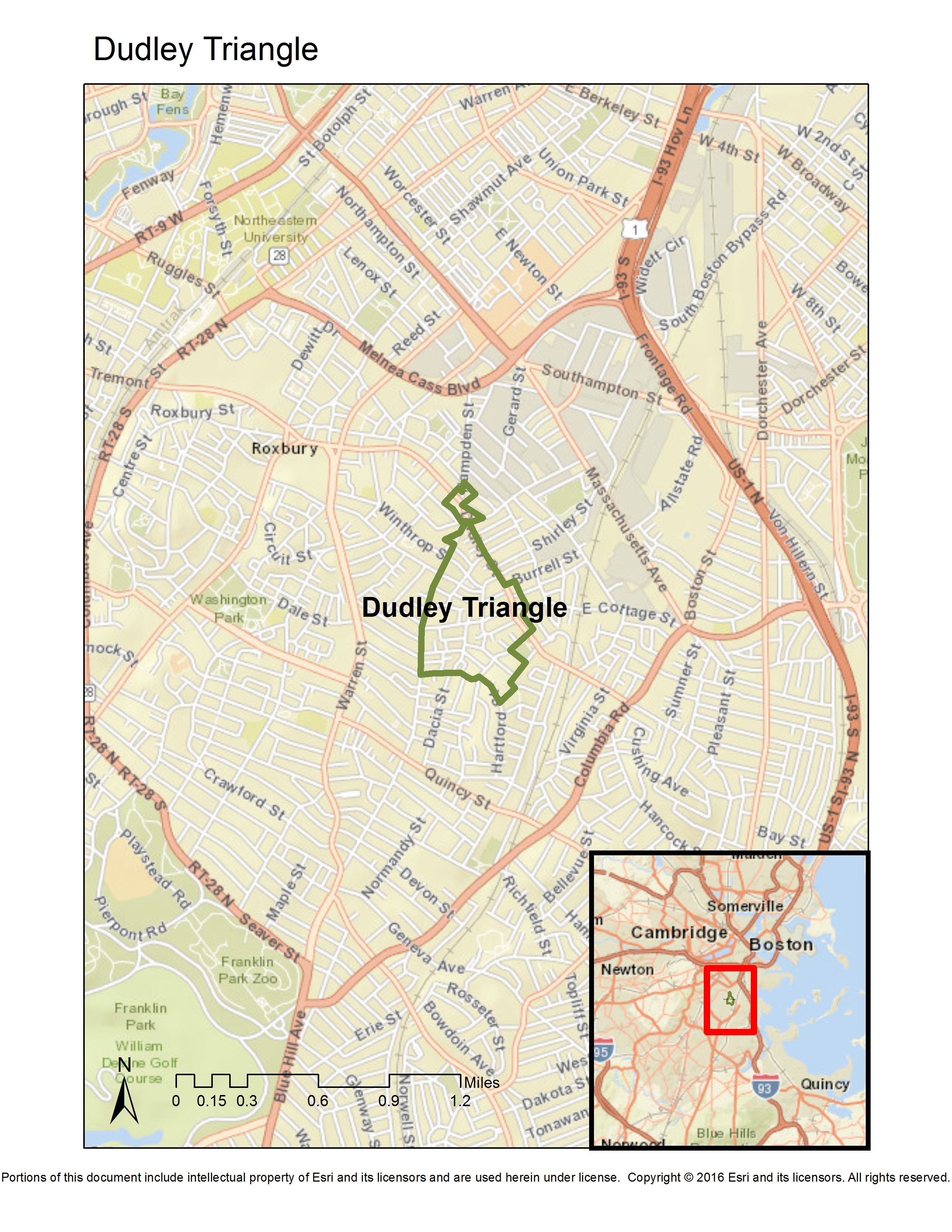Boston, MA
Eminent Domain in the Hands of the Community
Eminent domain is “a blessing… The only lottery I ever entered was the lottery that I saw (DSNI) was having. They were building ten houses… I figured, you know, I don’t have a chance to win this lottery. But, I ended up getting number 10… Once I moved here, I said, they’re going to have to carry me out of this place.”
Diane Dujon who won the chance to buy one of the first 10 homes in a lottery. Prior to owning her home Ms. Dujon had been sharing a room with her daughter in a small apartment.
The Dudley Street Neighborhood Initiative (DSNI) in one of Boston’s low-income neighborhoods became the first community-based organization in the United States to be given eminent domain authority. Among the thousands and thousands of cases of the use of eminent domain to impose an outside government agency’s decision on a local community, Dudley Street stands out as a lesson in locally-controlled, democratic decision-making. It is also a case where rather than displacing existing residents, eminent domain was used to increase housing opportunities and improve the quality of life for existing low-income residents of the community.
By the 1980s, Dudley, a neighborhood within the Roxbury community of Boston, three miles southwest of downtown Boston, had suffered from decades of disinvestment. Like hundreds of inner-city neighborhoods around the country banks and insurance companies in Boston had illegally “redlined” the community, systematically denying mortgages, business loans, and insurance to residents and businesses. One-third of the land was vacant or had housing that was abandoned. “Arson for Profit” schemes, where property owners would surreptitiously hire criminals to set their buildings on fire so that they could collect insurance payments, were rampant in the community. The community also fell victim to illegal dumping on its scores of vacant lots.

Dissatisfied with the long-term failure of city government to address the problems in Roxbury, the Dudley Street Neighborhood Initiative (DSNI) was established with the help of the Riley Foundation in 1985 to help residents and business owners regain control over their community. Fearing that Dudley could be the object of yet another gentrification and displacement process where existing residents were displaced in the process of “improving” the community, DSNI created a very distinctive, innovative, and democratic process for redevelopment.
A convergence of economic, political, and legal opportunities enabled the local community to gain its own eminent domain authority. Ray Flynn, had just been elected with a progressive platform and was particularly open to new ideas from Boston’s often-ignored low-income communities of color. Provisions in Massachusetts state law as well as Boston City ordinances and practices also allowed for community-based redevelopment entities to be granted eminent domain powers.[1]
After months of community-based organizing and exerting pressure on key decision-makers, DSNI gained eminent domain authority over the 64 acre “Triangle” area of Dudley. Of 30 acres of vacant land, half were already owned by the city of Boston. Many of the other privately-owned half were already tax delinquent and prime candidates for takeover by the city and community. Rather than having a patchwork quilt of land parcels to work with, eminent domain power allowed the community to combine full-blocks of land into a single parcel that would be redeveloped under a community-led plan. Moreover, given the community control, the plan had existing residents’ interests in mind. The “public good” in this case of eminent domain was defined by the community and more tangible than the abstract down-the-road promises frequently associated with eminent domain.
[1] Elizabeth A. Taylor. 1995. “The Dudey Street Neighborhood Initiative and the Power of Eminent Domain.” Boston College Law Review. V. 36, n. 5 (September), 1061-1087.

